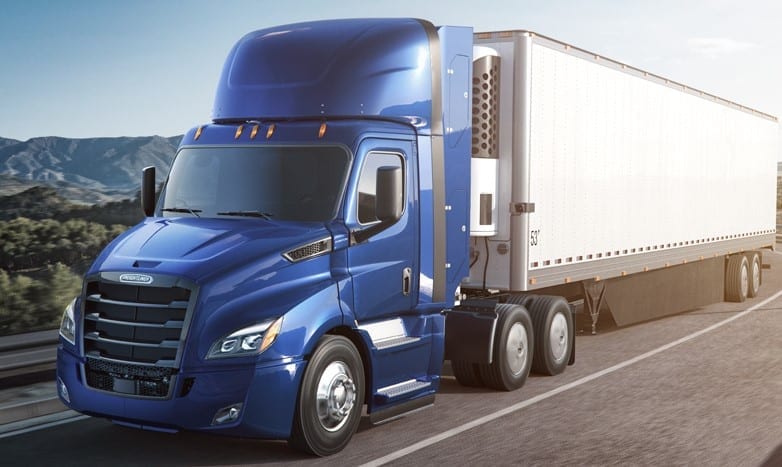Renewable Natural Gas (RNG) is on the rise as a transportation fuel. Natural gas vehicle (NGV) technology long ago established its clean air credentials. In the 1990’s NGVs were first to be certified to California’s ultra-low and super ultra-low emission standards.
Natural gas technology has since broken the ultra-low NOx barrier with engines certified to levels that are 90% cleaner than the most stringent U.S. EPA standards for oxides of nitrogen. These new, cleaner engines are helping to clear the air of smog and harmful pollutants. More recently, the increased fueling with biomethane, or RNG, takes vehicle technology environmental benefits to an even higher level of performance, helping to tackle climate change.
Renewable natural gas takes vehicle technology environmental benefits to a high level of performance, helping to tackle climate change.
Benefits Include the Lowest Carbon Intensity of any Fuel
RNG is captured above ground from organic material in agricultural, wastewater, landfill, or food waste. It produces carbon-neutral and even carbon-negative results when fueling on-road vehicles like short- and long-haul trucks, transit buses, and refuse and recycling collection vehicles. According to California Air Resources Board (CARB) calculations, RNG fuel has the lowest EER-adjusted carbon intensity of any on-road motor fuel, as low as -400. The increased use of renewable natural gas is not only a vital component of efforts to reduce transportation sector emissions, but is also a prudent investment in a cleaner, safer world.
Natural Gas Vehicles for America (NGVAmerica) and Coalition for Renewable Natural Gas (RNG Coalition) recently announced that 39% of all on-road fuel used in natural gas vehicles in calendar year 2019 was RNG. This equates to 277 million gallons of gasoline equivalent.
RNG fuel has the lowest EER adjusted carbon intensity of any on-road motor fuel, as low as -400.
There are over 1,600 stations across the U.S. and more than 175,000 natural gas vehicles on the road today. The use of RNG as a motor fuel has increased 291% over the past 5 years, displacing close to 7.5 million tons of carbon dioxide equivalent (CO2e). That is the greenhouse gas emissions equivalent of driving 18.6 trillion miles in a typical passenger cat. It is the CO2 emissions equivalent of consuming 842 million gallons of gasoline. This equates to the total amount of fuel used by 63,171 transit buses every year.
Delivering on Cleaner Air
RNG production is on the rise. RNG Coalition reports that 110 facilities are currently in operation in the U.S. and Canada, with an additional 98 more under construction or in substantial development. A recent study by ICF for the American Gas Foundation found that within the next two decades enough RNG could be produced in the United States to meet 75% of on-road diesel fuel needs.
And according to the International Energy Agency, biogas and biomethane production in 2018 was only a fraction of the estimated overall global potential, reporting, “full utilization of the sustainable potential could cover some 20% of today’s worldwide gas demand.”
A recent study for the American Gas Foundation found that within the next two decades enough RNG could be produced in the US to meet 75% of on-road diesel fuel needs.
Delivering on cleaner air and combating climate change requires accelerating the use of natural gas vehicles. Currently, only 43% of heavy-duty trucks on America’s roads meet EPA’s latest NOx standard. Heavy- and medium-duty vehicles are both a leading source of urban emissions worldwide and the number one source of smog in the United States. Newer diesel trucks – even when certified to the strictest federal standards – continue to emit more pollutants than the newest natural gas trucks.
RNG-fueled vehicles provide the most immediate and cost-effective full-range heavy-duty option when seeking to combat climate change and clear our air. They are a proven, affordable, and easily scalable zero emission equivalent solution for commercial deployment today. Just ask international fleets like UPS, Waste Management, and Frito-Lay that increasingly rely upon them.
Committing to a Carbon-Free Future
And just as the electric industry is committing to a carbon-free future through the introduction of more renewable sources (i.e. wind and solar), so is natural gas. By 2050, the natural gas industry will be net zero carbon through a combination of increased use of RNG and the introduction of hydrogen and emerging conventional natural gas carbon sequestration technologies into its delivery system.
Begin to decarbonize your transportation operations today with renewable natural gas-fueled vehicles. Click on this link to graphics of NGVAmerica’s 2019 on-road report for further information.


